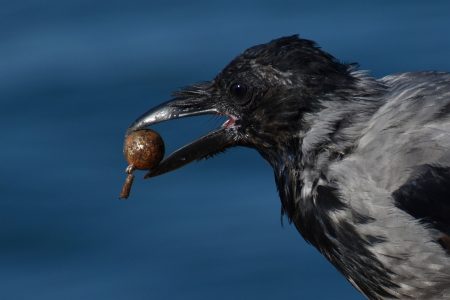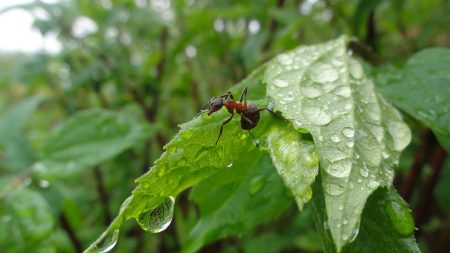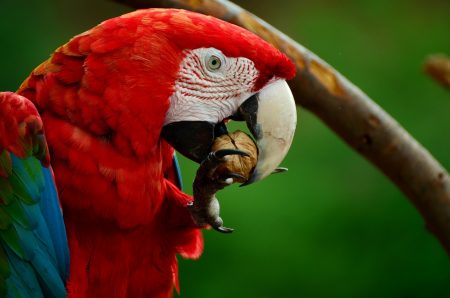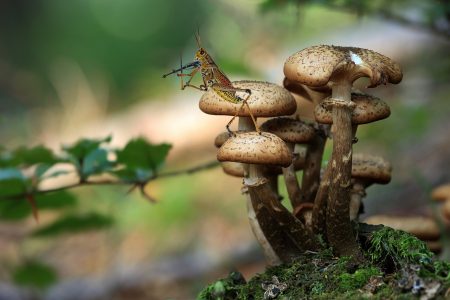- Animals can be smart, but did you know they can be THIS smart?
One of the most distinguishing features of humanity is our ability to use tools. We alone have unlocked the mysteries of grabbing a tool to accomplish tasks too difficult for bare hands.
Except that’s not true at all.
Plenty of animals know how to use and even make tools. Sure, they’re not as sophisticated as a blowtorch or a computer but hey — even our tools were once nothing more than sticks and stones.
Here are 10 animals big and small that use tools, at least to some extent.
1. Chimpanzees
You probably already knew chimps use and make tools. If you didn’t, well, they do. And they’re very adept at it.
Chimps regularly use long sticks to dig termites, bugs, and honey out of crevices. More impressively, they strip strong branches and sharpen their tips with their teeth to make spears for hunting smaller primates.
They even know how to make sponges. Researchers have seen chimpanzees chewing leaves and balling them up to dip them in a water pool they can’t reach otherwise.
2. Crows
Crows are among the most intelligent birds, so it’s no wonder they have tools. They can use twigs and sticks to dig food out of holes and even modify their digging tools to fit different kinds of holes.
And the first stick isn’t long enough, crows know how to attach several sticks together to make a longer implement. They even have a basic understanding of physics — they drop pebbles into a water container to raise the water level and reach something floating in it.
Perhaps the most amazing thing about crows is that they start using tools even if they’ve never seen another crow do so. It seems tool use is programmed into their birdbrains.
3. Dolphins
Dolphins are very, very smart, but for the longest time, we didn’t know they used tools. It makes sense — it’s hard to grab a tool with fins.
But then marine biologists noticed a group of Australian dolphins doing something peculiar. They grabbed sea sponges with their beaks and used them to stir up the ocean floor.
This way, the dolphin can more effectively shoo out small, hiding fish. The sponge also protects the dolphin’s beak from any potential sharp objects or attacking fish.
Some dolphins also grab shells and trap fish in them. They’ll then swim to the surface and tip the shell back to enjoy a refreshing fish cocktail.
4. Sea Otters
Before we noticed dolphins used tools, sea otters were the only known marine mammals to use tools. They bang shells against rocks on the beach to get to the tasty clam within.
Granted, that doesn’t exactly count as “tool” use, since the otters are just making use of a stationary stone. But they also know how to bring their hammer/anvil with them.
If an otter can’t find a good stone, it’ll fetch one from the bottom of the sea. It’ll then float on its back, place the stone on its belly, and whack a clam against it.
5. Octopi
Octopi are very intelligent — for an invertebrate at least. Yet, they show that you don’t need a spine to know how to build a suit of armor.
Some octopuses drag around two halves of a shell. If an enemy approaches, the octopus pulls the shelves around itself to form a makeshift bunker.
They also use bioweapons. Blanket octopuses have been seen tearing off jellyfish’ stinging tentacles and whipping enemies and prey with them.
6. Elephants
An elephant never forgets, so it’s no wonder they pass knowledge of tool use across generations. On the simpler side of things, they’ll modify branches to make rakes they can use to scratch an itch their trunks can’t reach.
But they also know how to make water containers. They’ll dig a hole and fill it with water before chewing up bark to make a sponge. The elephant then soaks up the water and carries it around — or buries it in sand to return to the still-wet sponge later.
7. Finches
The woodpecker finch from Galapagos Islands is one of the most famous birds to use tools. They’ll grab cactus spines to spear grubs and bugs hiding in deep holes.
But what’s most amazing is that they know what kind of spine to use for each bug and hole. If they can’t find the right kind of spine, they’ll make it themselves from another type.
They even use the spines as swords to battle other finches.
8. Ants
Certain types of ants use leaves, bark, or mud to transport water into their nests. You might write this off as automated, robotic behavior, but the ants actually have a very good understanding of what makes for a good water bowl.
Researchers offered ants leaves and artificial objects, like sponges or tiny water bowls. The ants always went for the tool that made it easiest to carry the largest amount of water — even if they’d never seen it before.
Clearly, the ants aren’t just following their programming. Otherwise, they would’ve picked the familiar leaves.
9. Parrots
Do you have a pet parrot? Then you probably know how notoriously handy they can be, without even having hands.
Many parrot owners have been surprised by their birds using pieces of plastic and metal to unlock their cages. Even some parrots in the wild use back scratchers and makeshift hammers.
Finally, palm cockatoos pack their beaks with leaves to twist open nuts. They do it for the same reason you might grab a towel to open a jar of pickles — more friction makes it easier to get the lid off.
10. Crickets
Few people think of crickets as smart. But that might change after you see one build a loudspeaker.
Some crickets know how to put twigs, leaves, and other detritus together to construct an echo chamber. During mating season, this allows their seductive chirps to carry farther and reach far-away sexy cricket ladies.
Nothing to drive innovation than trying to score.
Hits: 0




















